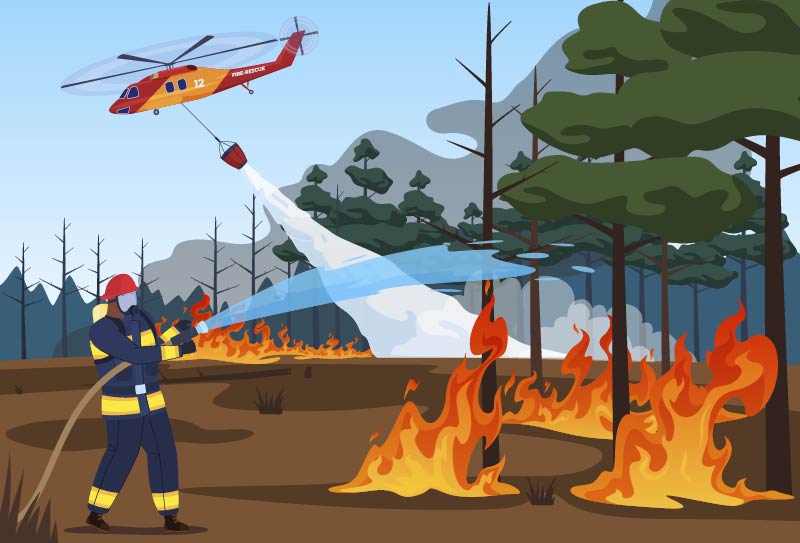“In the face of wildfire, preparedness fuels safety.”
Navigating Wildfire Challenges
Wildfires are uncontrolled fires that spread rapidly through forests, grasslands, or populated areas. They can cause immense destruction, impacting air quality, creating hazardous conditions due to smoke and ash, and can even result in evacuations.
Emergency Preparedness Tips for Wildfires:
- Evacuation Plan:
- Prepare an evacuation plan in advance. Identify multiple evacuation routes and safe locations, such as community centers or family/friends' homes, in case immediate evacuation is necessary.
- Emergency Kit:
- Assemble an emergency kit containing essential items like water, non-perishable food, medications, a first-aid kit, important documents, flashlights, batteries, hygiene items, and dust masks to protect from smoke inhalation.
- Stay Informed:
- Monitor local news and weather updates regularly. Follow evacuation orders and stay informed about the wildfire's progress and changing conditions.
- Air Quality Protection:
- Keep windows and doors closed to prevent smoke from entering the house. Use air purifiers if available. Stay indoors as much as possible, and if air quality is poor, consider relocating to an area with better air quality.
- Prepare the Home:
- Clear gutters, remove dry leaves, and debris from the roof, yard, and around the house. Create a defensible space by clearing flammable vegetation and keeping the area around the house moist.
- Communication Plan:
- Establish a communication plan with family, neighbors, and emergency contacts. Ensure everyone knows how to stay in touch in case of evacuation.
- Transportation:
- Ensure vehicles are fueled and well-maintained. Be ready to evacuate at short notice and consider alternatives for transportation if vehicles are compromised.
- Health Precautions:
- Keep medications, medical supplies, and important documents in an easily accessible emergency kit. Ensure adequate supplies for at least a week.
- Mobility Assistance:
- Make arrangements for older adults with mobility issues. Keep mobility aids, such as walkers or wheelchairs, readily availabl1e.
- Emergency Contacts and Medical Information:
- Carry a list of emergency contacts, medical information, and insurance details. Ensure all necessary medical devices, glasses, or hearing aids are packed.
- Evacuation Drill:
- Conduct evacuation drills periodically, especially for older adults, to familiarize them with the process and locations of emergency supplies.

